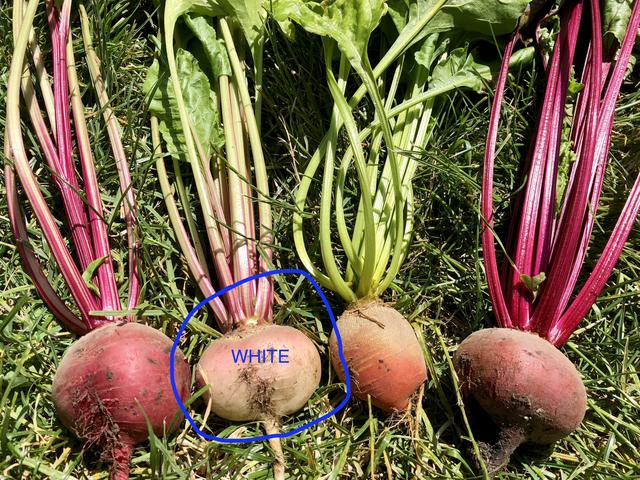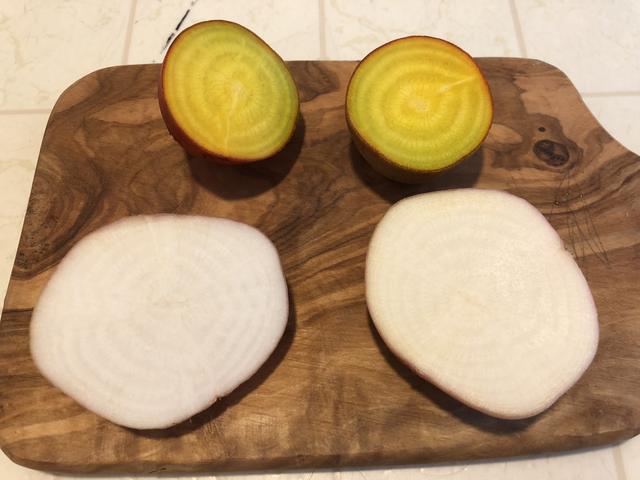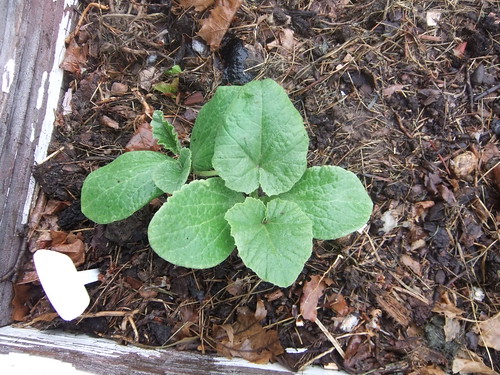Post by farmermike on Jun 9, 2018 17:14:28 GMT -5
Last year I began a beet landrace project. I started out with the "beet blend" from West Coast Seeds. This mix contained most of the common color variations, but no white beets. I grew out a patch of these seeds and didn't do any selection; I just let everything go to seed (maybe that was unwise). The problem was that the different phenotypes (varieties) didn't really want to flower at the same time. There was some overlap, but probably a lot of selfing too.
This spring, I grew out a little test patch of the saved seed. Most of the beets looked like the varieties I am familiar with, but some white ones showed up too. If any of these are crosses, they would be the F1 generation.



I don't really want too many white beets (although they tasted fine), but I do want to grow out some crosses and mix up the genetics a bit. I'm trying to figure out if the white phenotype serves as an indication that a cross actually occurred, as opposed to a self pollination within one variety. My (limited) understanding is that white is epistatic over red and yellow. So a cross between a red and yellow may produce some whites? Not sure what causes the striped "chioggia" phenotype.
Most of my ideas about beet color inheritance comes from billw's blog post about Ulluco color genetics and this paper from the 1930s.
So, does it make sense to let any of the white ones make seeds? Or should I assume that some of the colored beets are also crosses? I'm fine with some white beets showing up, but I ultimately don't want to select for it.
This spring, I grew out a little test patch of the saved seed. Most of the beets looked like the varieties I am familiar with, but some white ones showed up too. If any of these are crosses, they would be the F1 generation.



I don't really want too many white beets (although they tasted fine), but I do want to grow out some crosses and mix up the genetics a bit. I'm trying to figure out if the white phenotype serves as an indication that a cross actually occurred, as opposed to a self pollination within one variety. My (limited) understanding is that white is epistatic over red and yellow. So a cross between a red and yellow may produce some whites? Not sure what causes the striped "chioggia" phenotype.
Most of my ideas about beet color inheritance comes from billw's blog post about Ulluco color genetics and this paper from the 1930s.
So, does it make sense to let any of the white ones make seeds? Or should I assume that some of the colored beets are also crosses? I'm fine with some white beets showing up, but I ultimately don't want to select for it.


